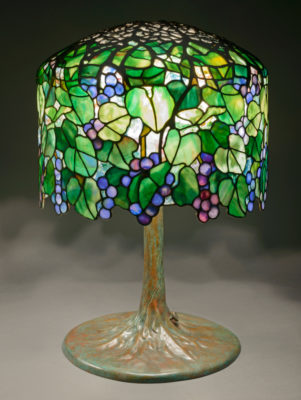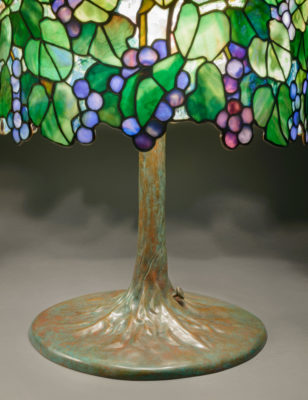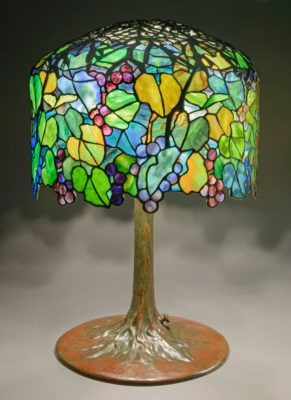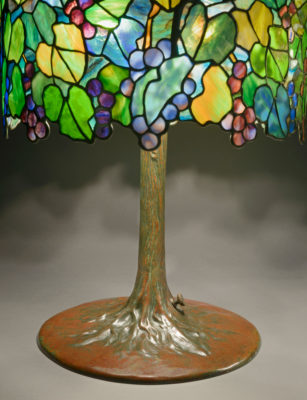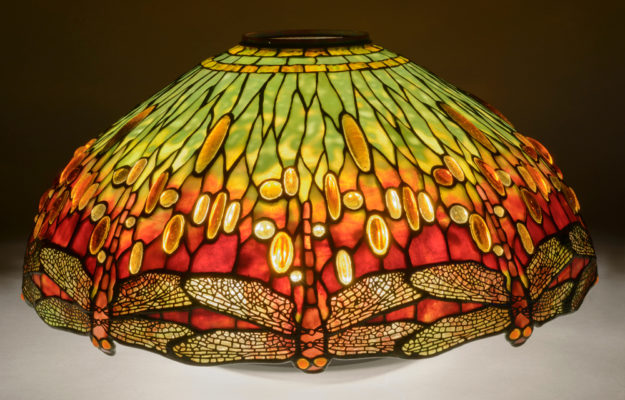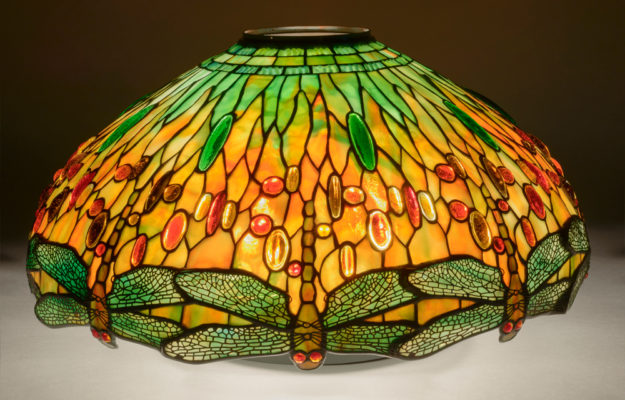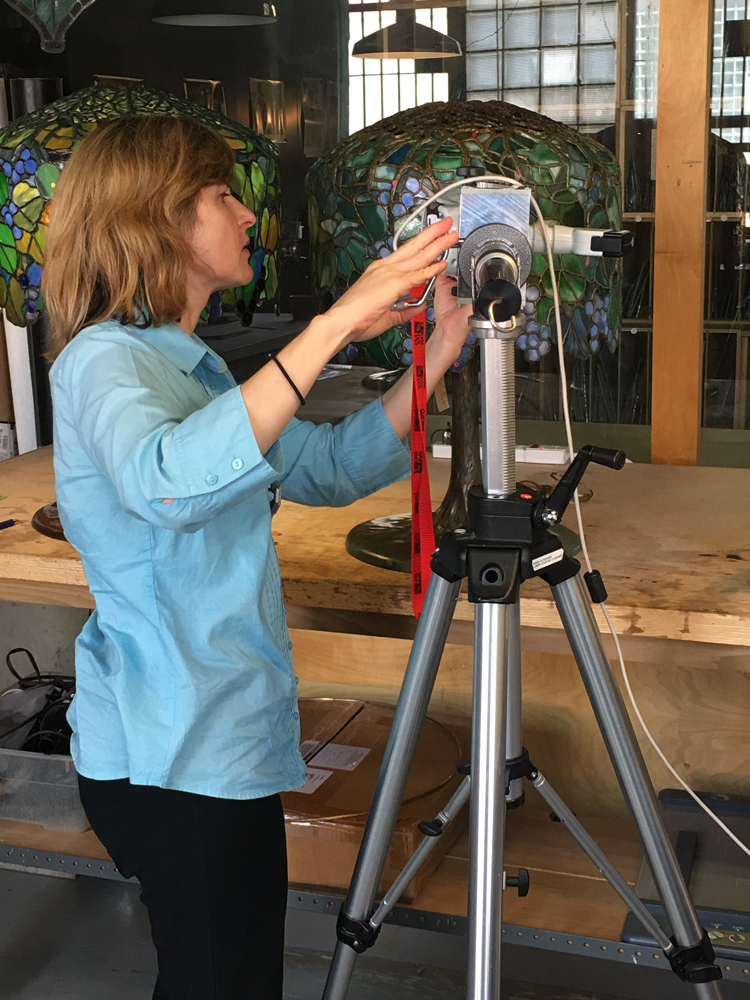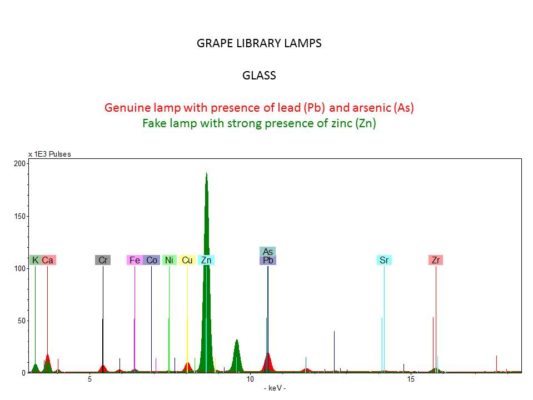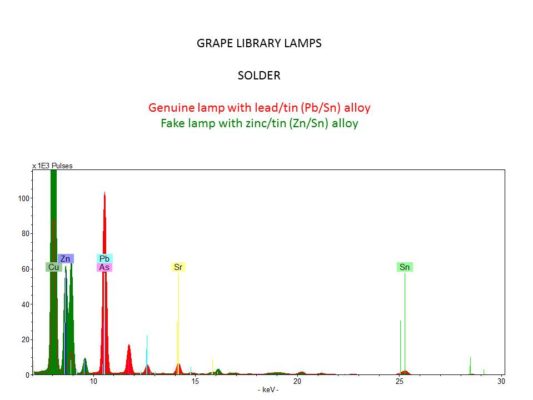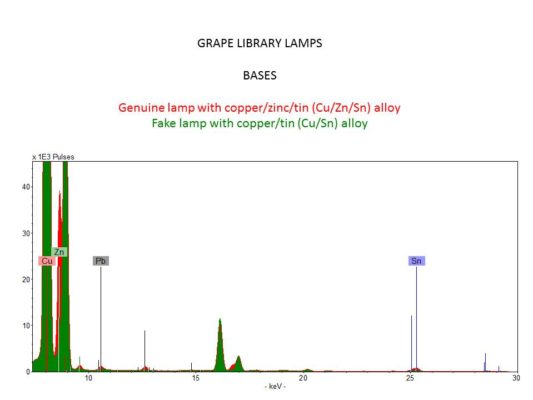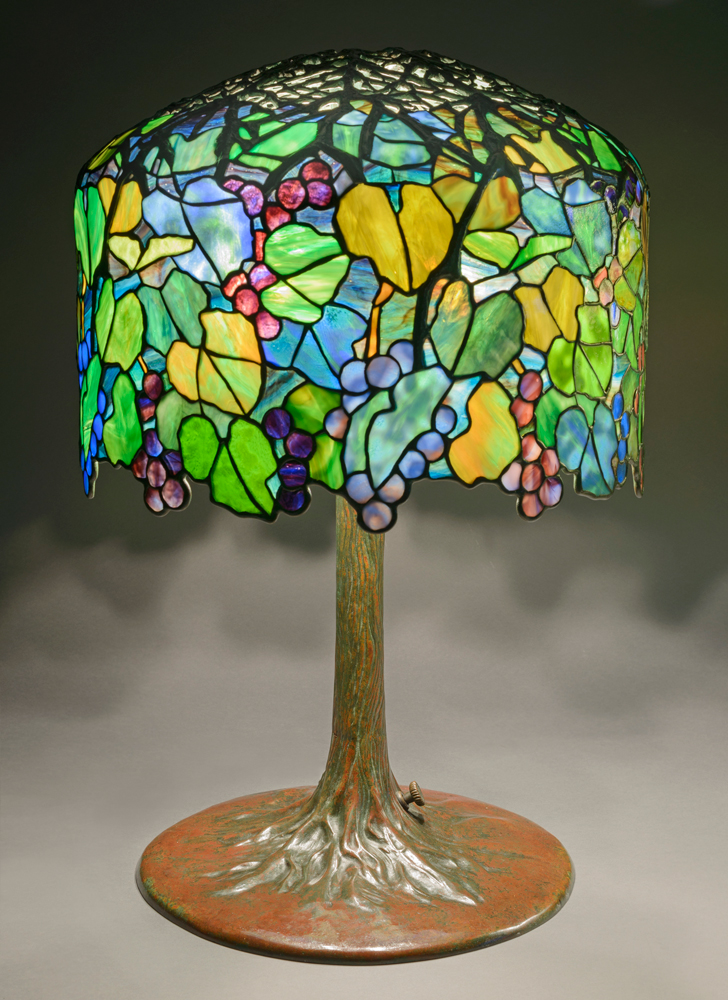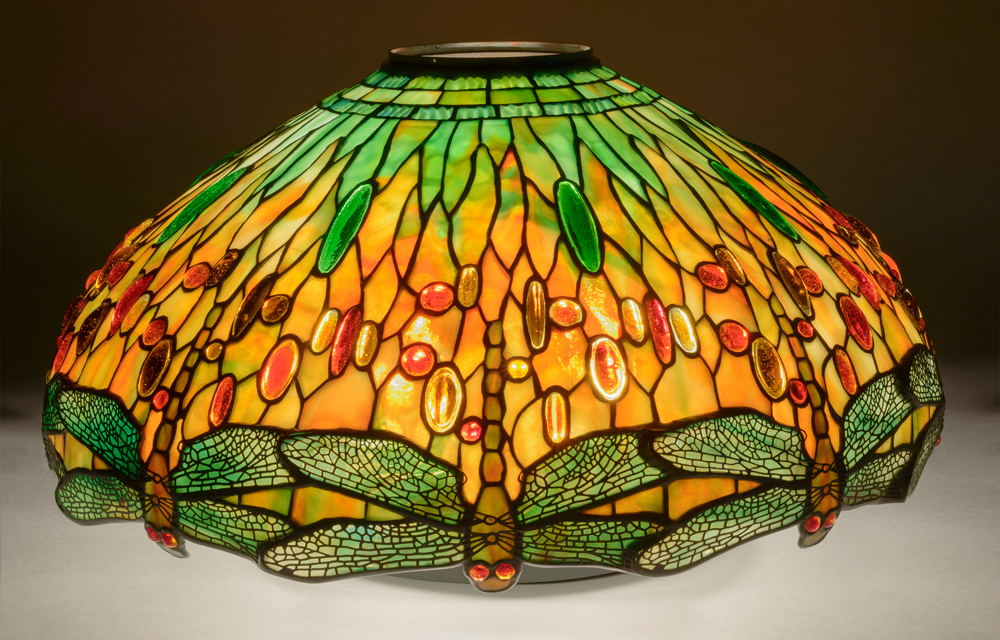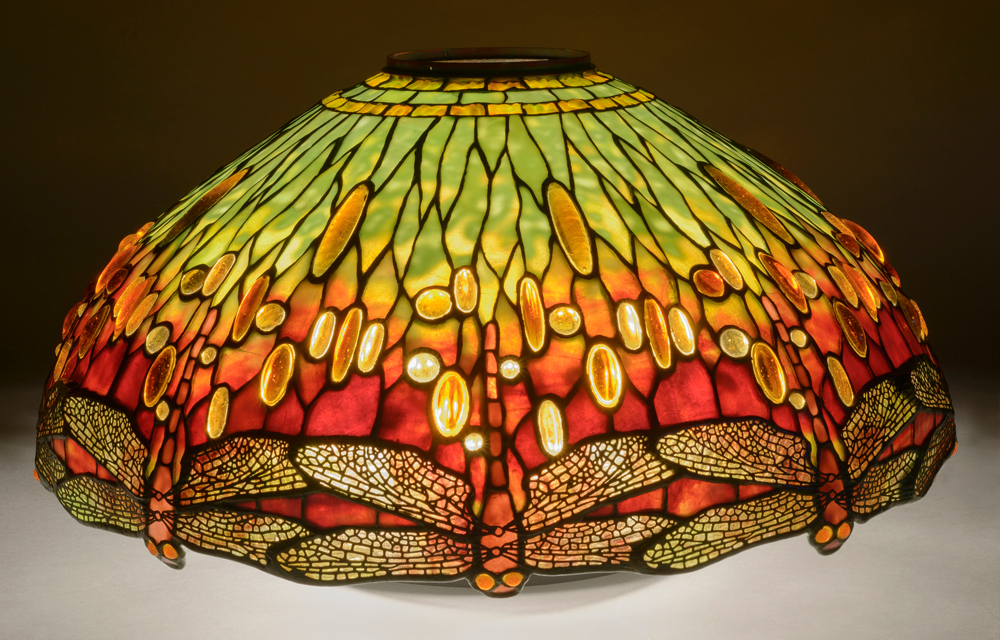Tiffany
Tiffany or Tiphony?
Authentic leaded-glass lampshades made by Tiffany Studios can command high prices at auction. Collectors compete to acquire these lamps, valuing their beautiful colors. Recent research has enabled scholars to identify many of the women and men who designed and created these wonderful objects.
The lamps shown here are from the collection of Dr. Egon Neustadt (1898−1984) and his wife, Hildegard (1911−1961), who purchased more than 200 lamps. The Neustadts began collecting when they were furnishing their first home in 1935, when Tiffany lamps were out of fashion. Their first purchase, which featured a Daffodil shade made around 1905, cost only $12.50. Today that same lamp might be worth between $35,000 and $60,000.
Provenance
The two pairs of lamps shown here were purchased by the Neustadts. The ones with their original bases are a style known as "Grape" library lamps; the examples of shades alone are a popular version of Tiffany’s celebrated "Dragonfly" design. All four are marked "Tiffany Studios," but only two are authentic.
Connoisseurship
One of the ways that experts distinguish between genuine and fake Tiffany lampshades is through the types and colors of the glass. Louis Comfort Tiffany operated his own glassmaking factory in Corona, Queens, New York, but also purchased glass from other companies. The shades made by Tiffany Studios contain an extraordinary array of complex multicolored, textured, and patterned glass made by hand (each sheet is unique) as well as glass "jewels" that were formed in molds. The skill in soldering, the quality of the casting of the bronze bases, and the color of the surface patina are also important factors to consider.
Scientific Analysis
Recent X-ray fluorescence (XRF) analysis suggests that some genuine Tiffany glass is leadbased, with most colors containing both lead and arsenic. Such analysis also enables scientists to distinguish authentic from fake through the elements found in the solder that joins the pieces of glass. The solder in genuine Tiffany lamps is composed of a lead/tin alloy and also contains arsenic; the solder used to create the fakes is a zinc/tin alloy.
Scientists can also distinguish between genuine and fake Tiffany lamp bases using XRF. Genuine examples are generally made from a copper/zinc/tin/bronze alloy; some fake lamp bases are a copper/tin/bronze alloy.
On September 2, 2016, Winterthur scientists analyzed these lampshades at the Neustadt Collection with a portable X-ray fluorescence spectrometer. Tiffany glass has been analyzed by others, but this recent work has identified characteristic differences in the solder and lamp bases for the first time.
Verdict
Both connoisseurship and scientific analysis aid in distinguishing the genuine "Grape" library lamp from the fake. The "Dragonfly" lampshade on the left has been exhibited and published as authentic for many years, but recent analysis has identified it as an excellent fake. The "Dragonfly" lampshade on the right has long been thought to be problematic. Recent analysis, however, has shown it to be authentic.
Look closely at this lampshade and notice the wide variety of complex and colorful glass, which is characteristic of authentic shades made by Tiffany Studios. In particular, notice the artful variety of purples in the grapes; the translucency and texture vary. The glass was thoughtfully selected to create a sense of roundness in the grapes, and when compared to the forgery, has more color and variety in texture.
"Grape" library lamp (genuine)
Tiffany Studios, New York; ca. 1905
Leaded glass, bronze
The Neustadt Collection of Tiffany Glass, Queens, New York
XRF clearly shows that this lamp is a fake. No lead was found in any of the glass; the base was made from a copper/tin alloy; and the solder has been found to be a zinc/tin alloy, which differs from components found in genuine lamps. The quality of the cast bronze armature at the top of the shade is also not as good as that of the genuine examples. Although not as varied in color and texture, the glass is similar to the types and colors used by Tiffany Studios. The plating on the inside, a double layer of glass sometimes found on Tiffany windows, is cause for concern.
"Grape" library lamp (forgery)
Maker unknown; 1975-2000
Leaded glass, bronze
The Neustadt Collection of Tiffany Glass, Queens, New York
This "Dragonfly" lampshade was once deemed authentic and was exhibited as such for a number of years. Despite the beautiful glass selection and careful craftsmanship, an expert recently expressed concern when comparing the shade to authentic examples. Winterthur’s XRF analysis clearly shows that it is a fake. The solder and glass contain no lead, which is inconsistent with authentic examples.
"Dragonfly" lampshade (forgery)
Maker unknown; 1975-2000
Glass, brass filigree
The Neustadt Collection of Tiffany Glass, Queens, New York
This "Dragonfly" lampshade has long been considered a forgery. It contains a second layer of glass, called plating, applied to the interior of the shade, thus changing the tonality of the colors. Plating is found in Tiffany windows but is virtually unknown in Tiffany lampshades.
The Neustadt curator and conservator determined that the type of spotted glass in the lampshade was consistent with Tiffany glass, as was the patina and craftsmanship. The second layer of glass, however, was sloppily soldered. XRF analysis of the outer shade found lead in both the glass and solder, consistent with genuine examples. It is now believed that the second layer of glass was added at the request of Dr. Neustadt to create a more dynamic color transition from soft green to warm yellow and deep red.
"Dragonfly" lampshade (genuine)
Tiffany Studios, New York; ca. 1910, with later plating
Leaded glass, brass filigree
The Neustadt Collection of Tiffany Glass, Queens, New York
Bibliography
Dubravka, Jembrih, Manfred Schreiner, Momtchil Peev, Peter Krejsa, and Christian Clausen. “Identification and Classification of Iridescent Glass Artifacts with XRF and SEM/EDX.” Mikrochimica Acta 133 (2000): 151−57.
Parrott, Lindsy Riepma. “Sheets and Shards, Gems and Jewels: The Glass Archive of The Neustadt Collection of Tiffany Glass.” Journal of Glass Studies 51 (2009): 161−75.

